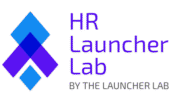
Managing paid time off (PTO) policies is one of the most challenging aspects of HR compliance for small and scaling businesses. PTO encompasses paid vacation, sick leave, and personal days—essential benefits that attract and retain top talent. However, navigating the maze of state and local paid sick leave laws, understanding accrual methods, and ensuring compliance can feel overwhelming, especially for businesses already stretched thin by growth demands. Without a clear, compliant PTO policy, businesses risk legal penalties, employee dissatisfaction, and operational disruptions.
Mastering the mechanics of PTO and navigating paid sick leave laws will empower you to create a winning PTO policy—one that ensures compliance, boosts employee satisfaction, and supports your business’s long-term success.
- The Fundamentals of Paid Time Off Policies
- Designing Compliant Paid Sick Leave Policies
- Vacation Policies: Key Considerations and Components
- All-in-One PTO Policies: A Comprehensive Approach
- Unlimited PTO: Considerations and Potential Risks
- Recordkeeping Requirements for PTO Policies
- Designing a Comprehensive PTO Policy
- Conclusion
Disclaimer #
The information on this site is meant for general informational purposes only and should not be considered legal advice. Employment laws and requirements differ by location and industry, so it’s essential to consult a licensed attorney to ensure your business complies with relevant regulations. No visitor should take or avoid action based solely on the content provided here. Always seek legal advice specific to your situation. While we strive to keep our information up to date, we make no guarantees about its accuracy or completeness.
This content may contain affiliate links, meaning we receive a commission if you decide to make a purchase through our links, at no cost to you.
For more details, refer to our Terms and Conditions.
